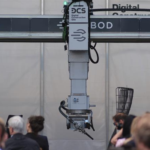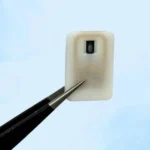Researchers at the University of East Anglia (UEA) have developed a new 3D printing resin for creating intraocular lenses used to treat cataracts and vision problems. This breakthrough could significantly improve eye care by offering unprecedented levels of customization. Unlike traditional, one-size-fits-all lenses, 3D printing allows for IOLs to be tailored to each patient’s unique eye shape and vision requirements. This customization has the potential to improve the quality of vision correction achieved after cataract surgery.

Furthermore, 3D printing offers the potential for faster production of IOLs. Compared to traditional methods like molding, 3D printing could expedite the design, testing, and manufacturing of these lenses. This could lead to quicker turnaround times between diagnosis and surgery, benefiting patients who are eager to regain their vision.
The current generation of IOLs, typically made from acrylic, faces limitations in customization and design complexity. UEA’s 3D printing method offers a promising solution for overcoming these limitations. The researchers also believe this approach could reduce production costs and facilitate the exploration of new lens materials, potentially leading to even better outcomes for patients.
Initial tests show the 3D printed lenses possess good optical clarity, can be folded for implantation, and are biocompatible. With further refinement and larger-scale testing, clinical trials could begin within the next few years. This innovation has the potential to revolutionize cataract treatment and usher in a new era of personalized vision correction.
Source: theengineer.co.uk









